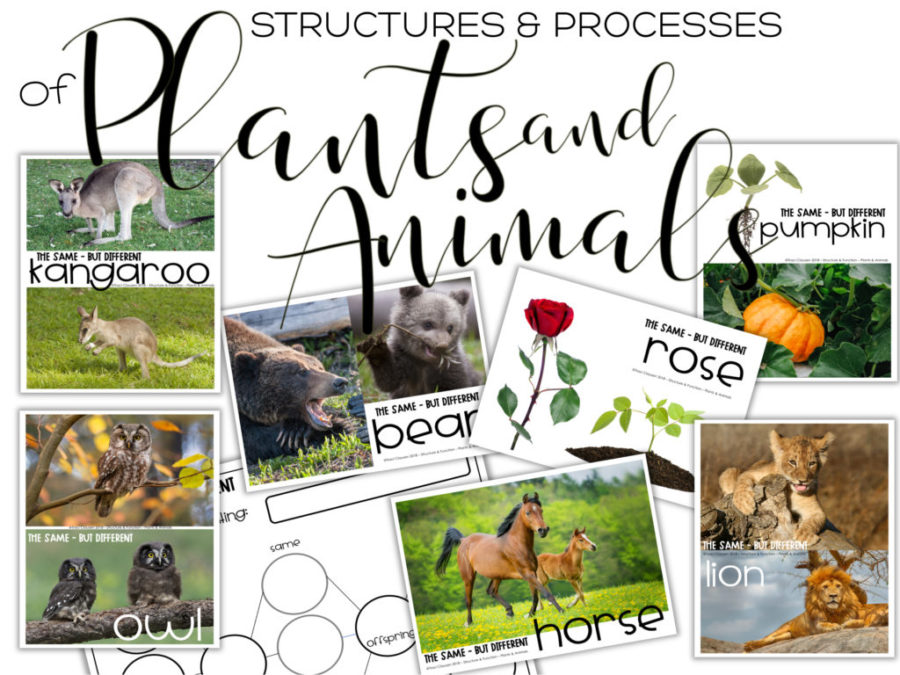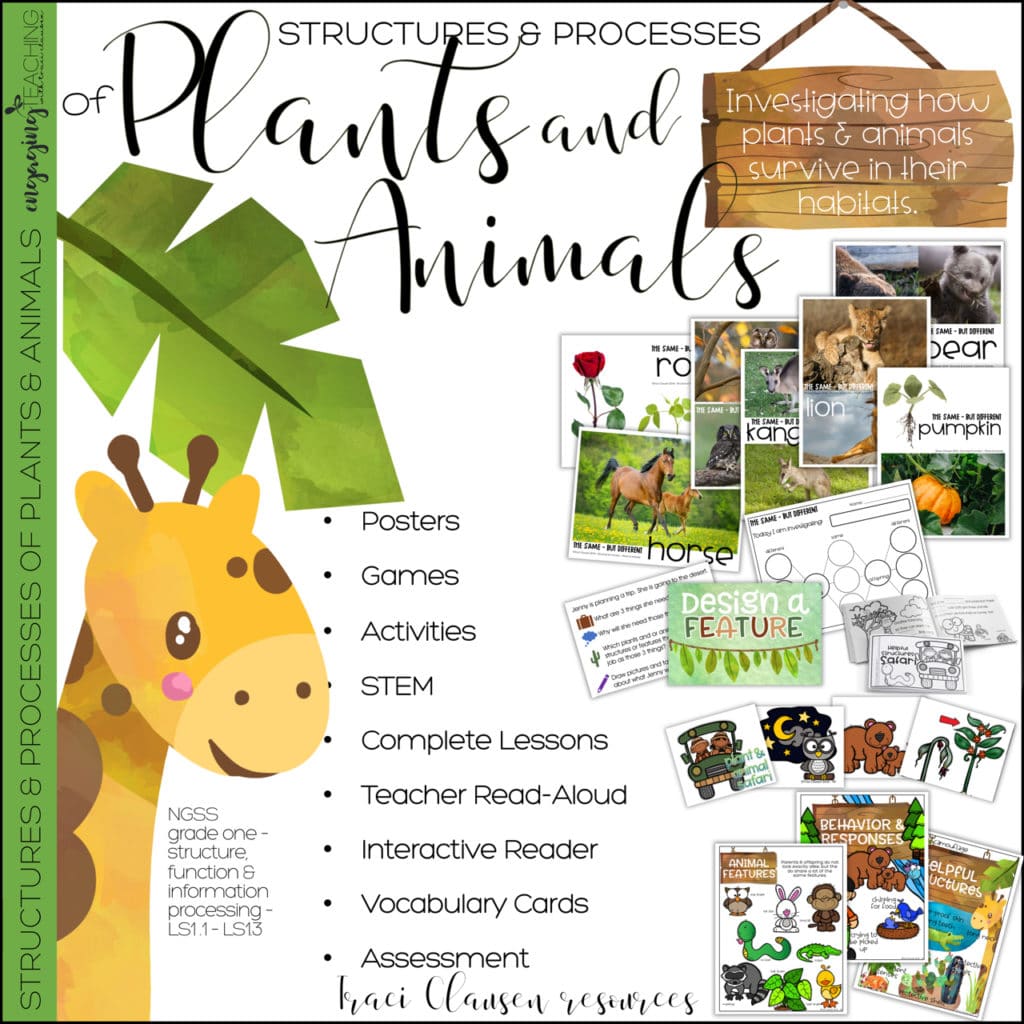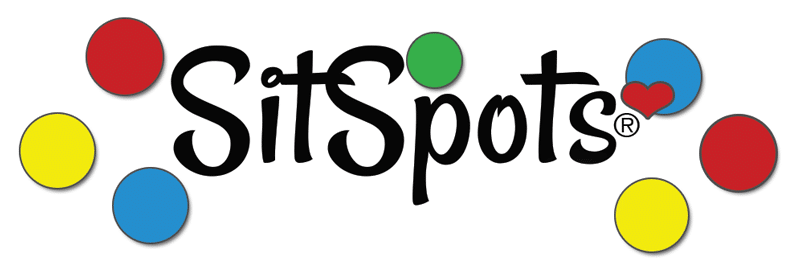I’ve added NGSS First Grade Life Science to our NGSS repertoire. The three first grade NGSS life science standards pertain to plants and animals and meld perfectly with our Habitats unit.
Structures and Functions of Plants and Animals
Identifying the structures and functions of plants and animals that help them survive in their particular habitats is a kiddo fave! These are the things that set those plants and animals apart. These are the things that INSPIRE humans to solve problems that exist in our world. Nature has helped these plants and animals meet their needs. Sometimes, we need a little help.
I use this poster and read a loud to introduce this concept to the kiddos. We discuss how some animal structures and features are similar to inventions people have made to help in the same way animals are helped by their bodies.
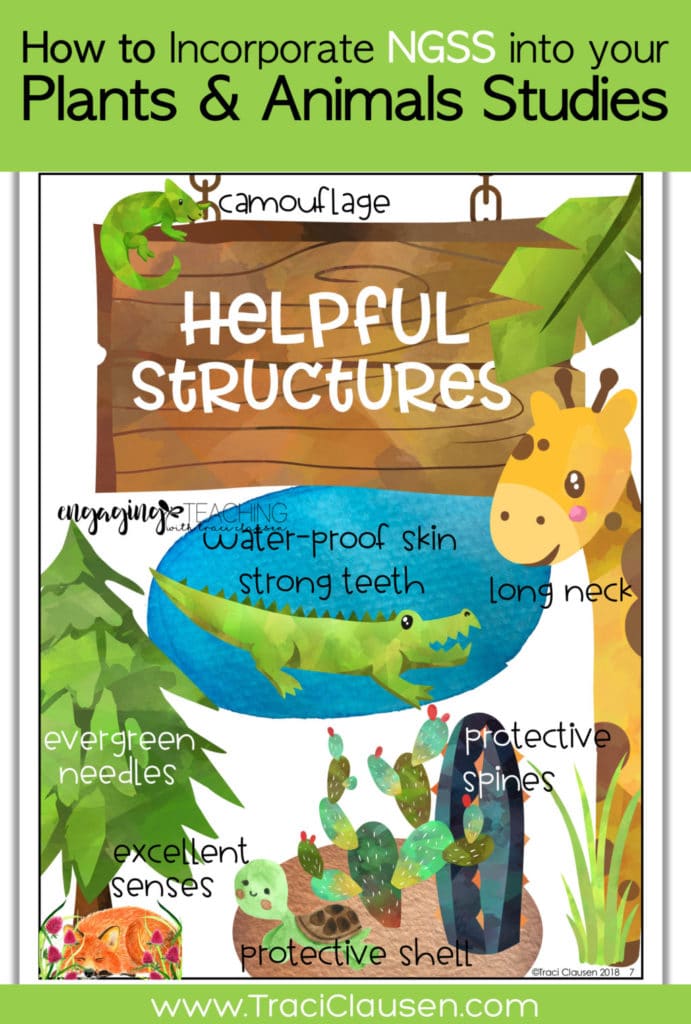
This read aloud is a lot of fun and provides further explanation of the concept.
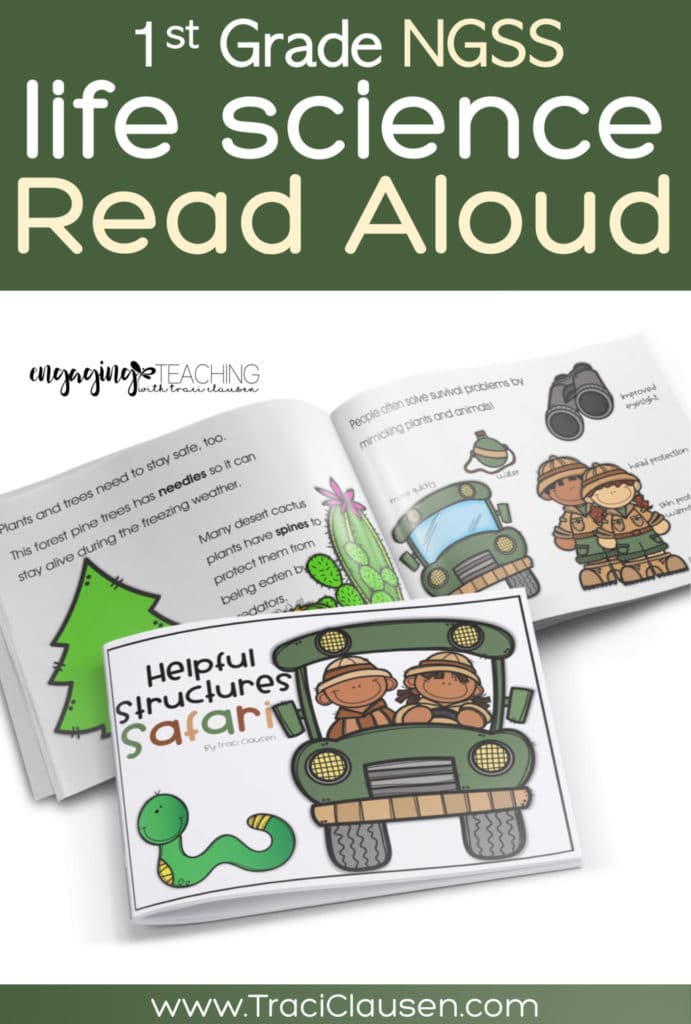
We make a list of people things that are a lot like the natural solutions of plants and animals.
a bike helmet works for humans much like shells protect tortoises
a ladder works for humans much like long necks and legs help giraffes
a water bottle stores water like a cactus naturally stores water
One of my favorite Magic School Bus episodes is about the desert habitat and the adaptations animals have made there to help them survive in the dry heat. It is called All Dried Up. (affiliate link) Videos like this one and other images we find using a Google image searches really help clarify how much we learn from plants and animals and how absolutely amazing nature is.
I keep loads of books and magazines about animals in my reading center during this time. These books offer great visual aid to drive home this concept.
As a side note, I change these books out each month – with the change of theme/unit. There are TONS of other books that stay in my reading center / classroom library year round. However, the books that are front and center revolve around our topic.
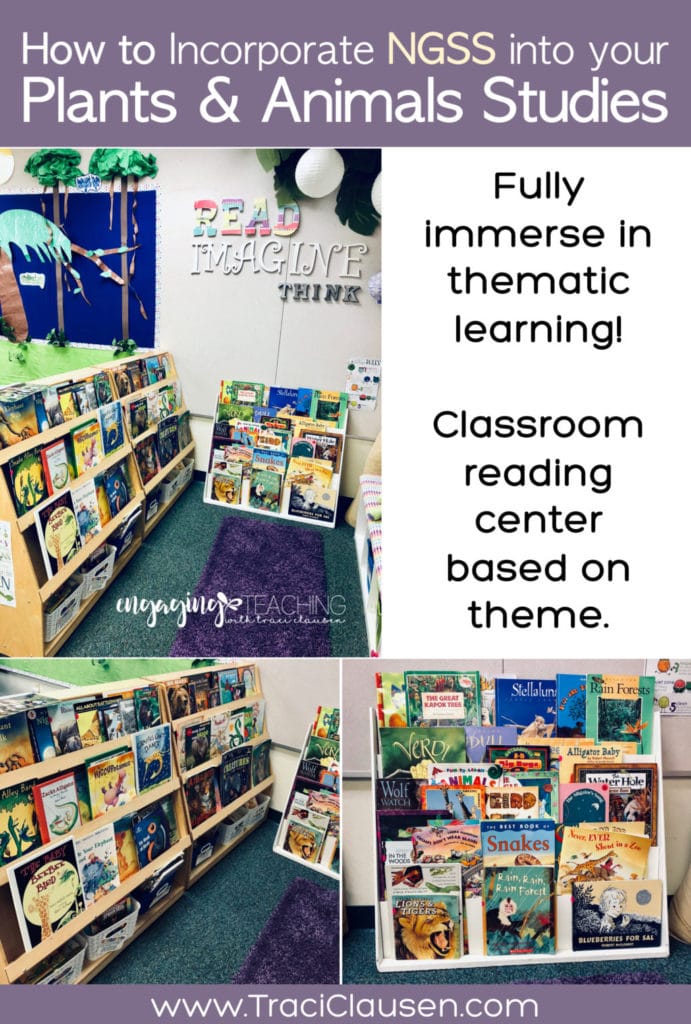
The kiddos also work with the interactive reader in this unit, too. After listening to the read-aloud, the kids can complete this book independently or with a partner.
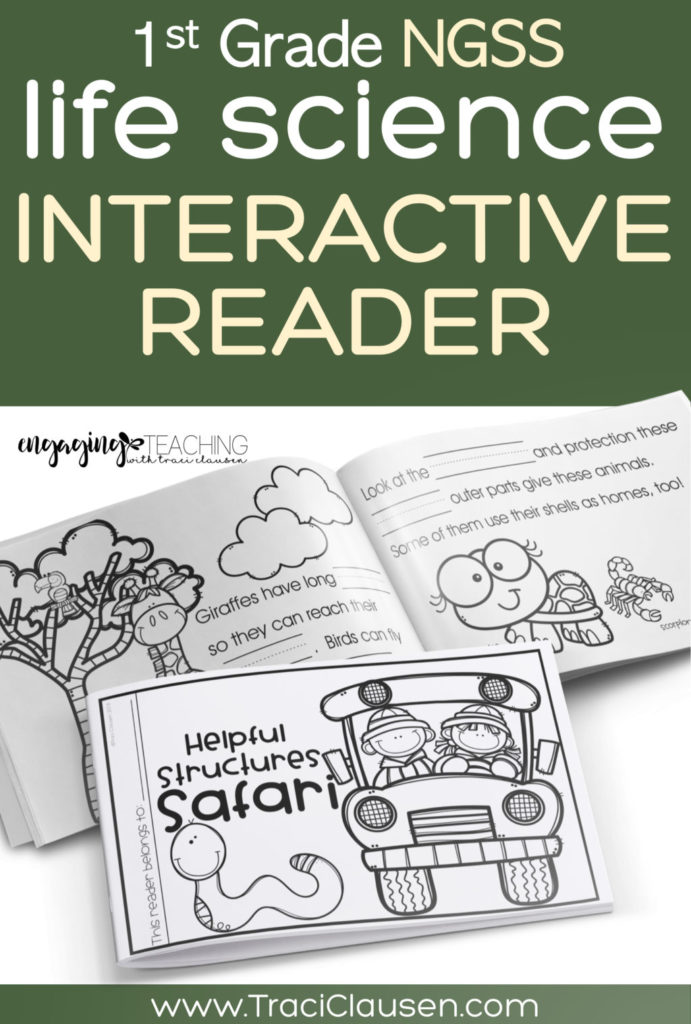
Incorporating STEM
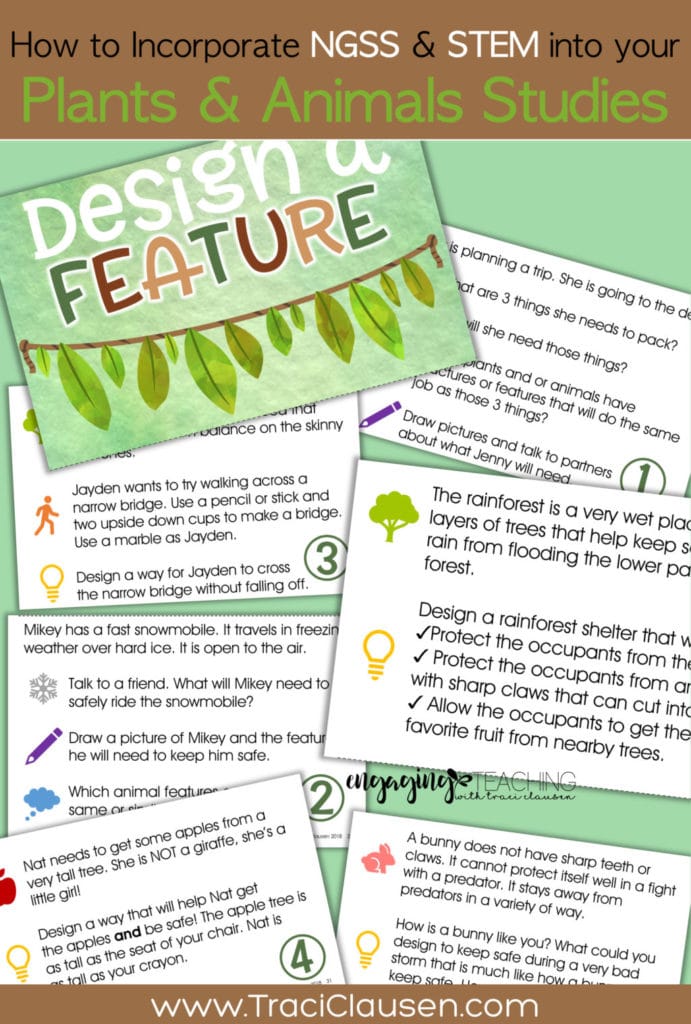
The kiddos can use a Maker Space area or STEM supplies to complete these Design a Feature activities. I use these types of activities to encourage cooperative interaction and collaborative groups. My kiddos also turn to these activities during their “your time” (slightly directed free choice).
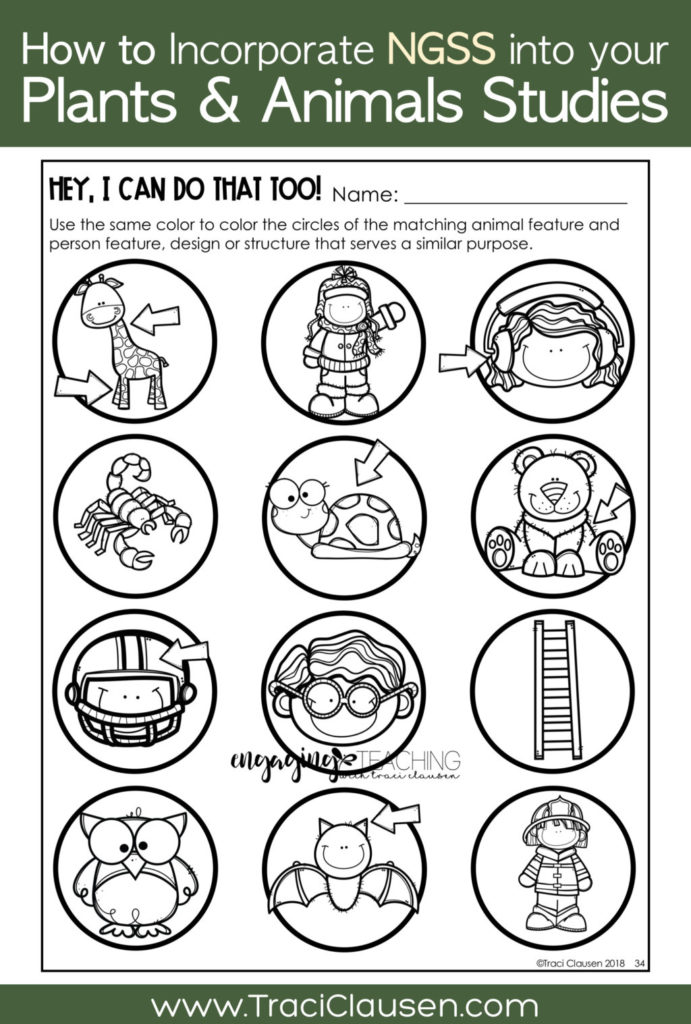
One of my favorite aspects of this standard is relating nature to what we invent, create, and modify so that humans can adapt to their surroundings. These elements of this resource really drive that message home. This little activity is a great summation of that concept.
Behavior and Responses
The kiddos can truly relate to this one.
I asked my kiddos:
You know when you are at the store whining… “Mom! Mom! Please! Can I have this? Please?!” and you just keep going?
YES!
Ok, why are you doing that?
So she’ll give it to us!
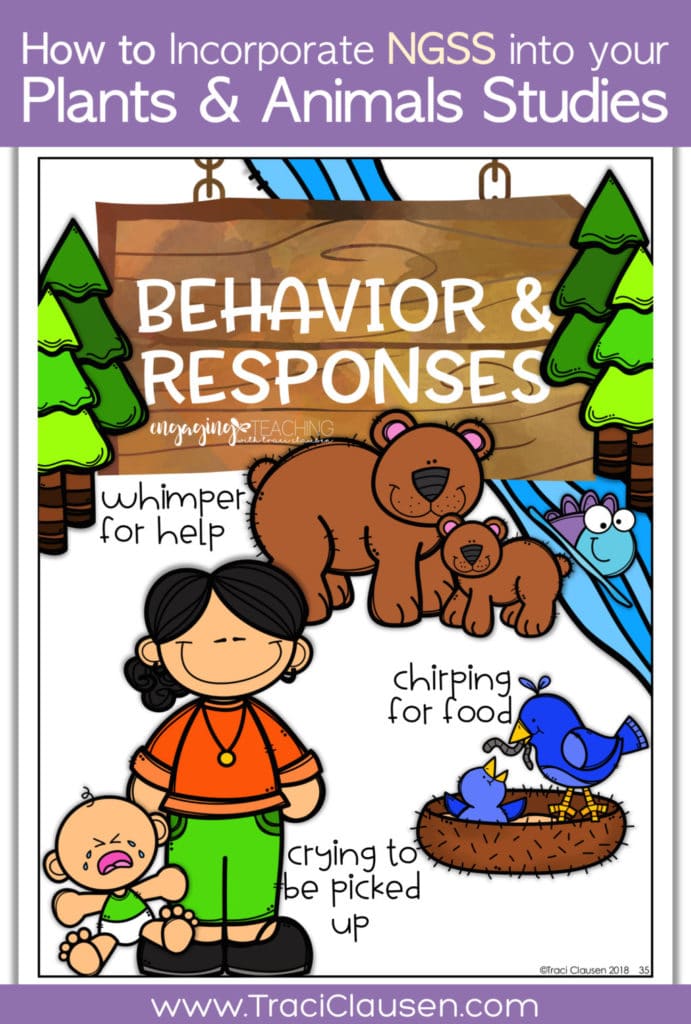
That guided us right into a discussion about behavior and response. We talked about what babies do to get what they need (a diaper change, a bottle, cuddles, etc.). Relating that to the chirps of baby chicks, the whines and meows and barks of other animals was an easy correlation to make.
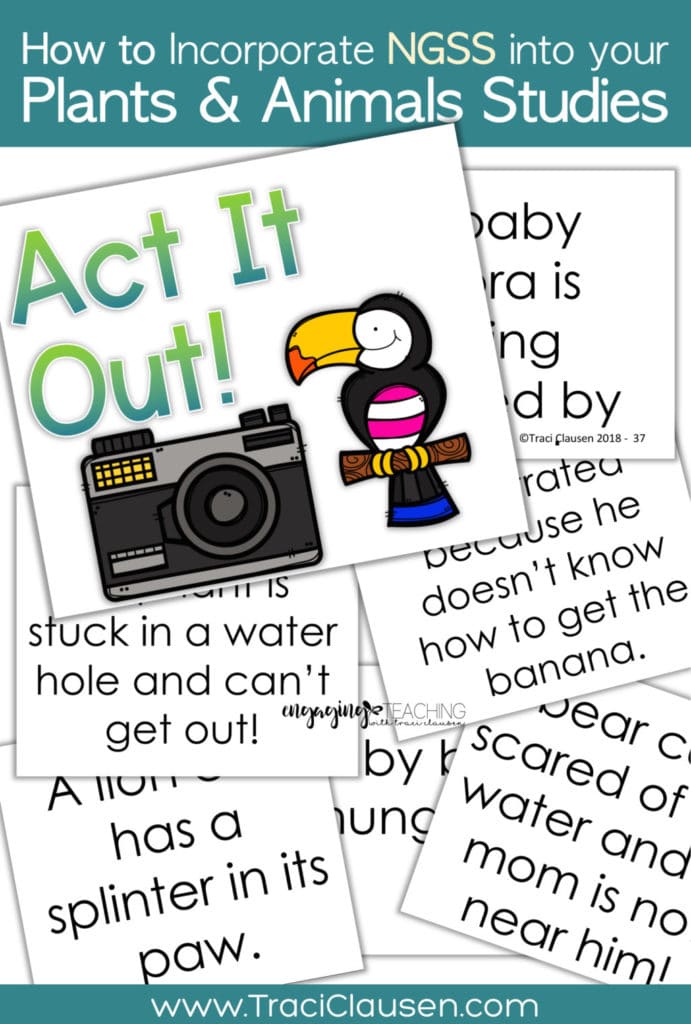
During another collaboration time, we used the “Act it Out” cards to exemplify behaviors and responses. This is another activity the kiddos love to have access to during their “your time” period. Having these kinds of choices to pick from during their choice time is a perfect way to keep them engaged in our science standards.
Plant and Animal Features
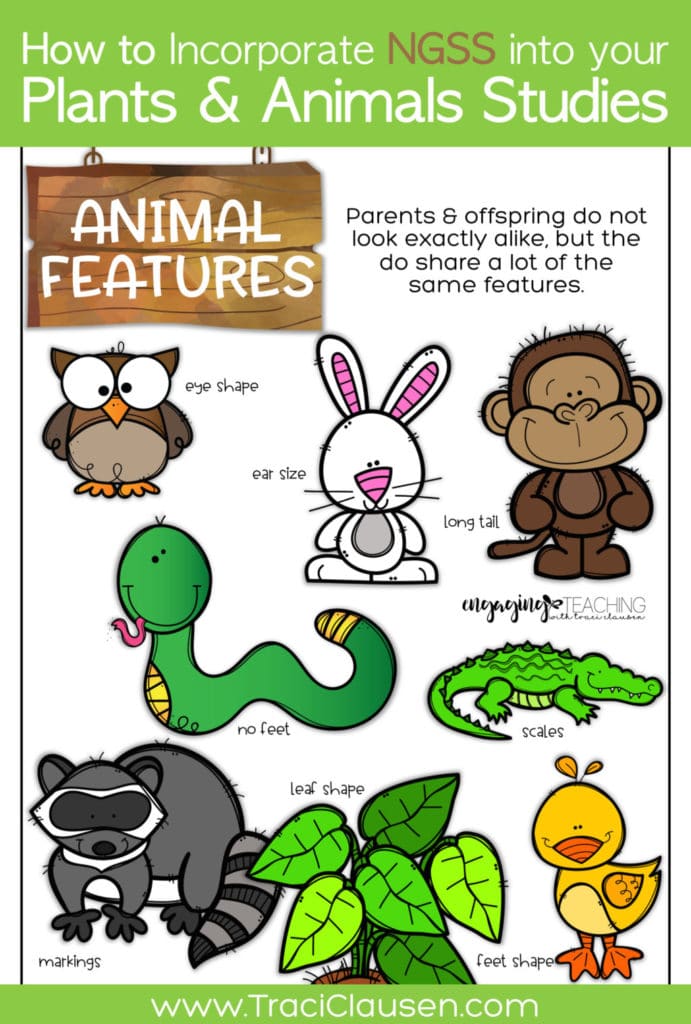
The plant and animal features part of this standard is definitely fun. We spend a lot of time reading books, watching video clips, and reading Scholastic Magazine articles to find recognizable features of plants and animals. These features that are unique and specific to the plants and animals often do a lot to increase their survival in their habitats. They are also traits that are shared between the parents and their offspring.
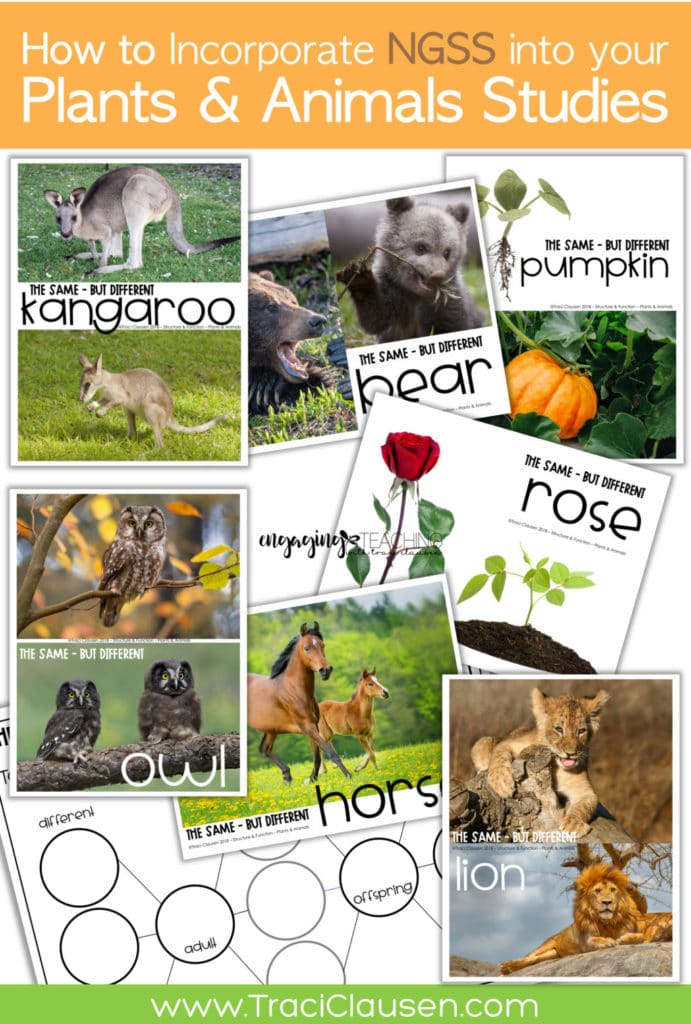
These activity cards are a HUGE favorite! The kiddos use a graphic organizer to compare and contrast the parents and offspring of plants and animals. Kiddos identify the similar as well as the differing features between the parents and offspring. During this time we discuss how pumpkin seeds can only grow another pumpkin plant, dogs can only have puppies, etc.
Wrap It Up Activities
My kids LOVE card games. These cards can be used for a wide assortment of games and activities.
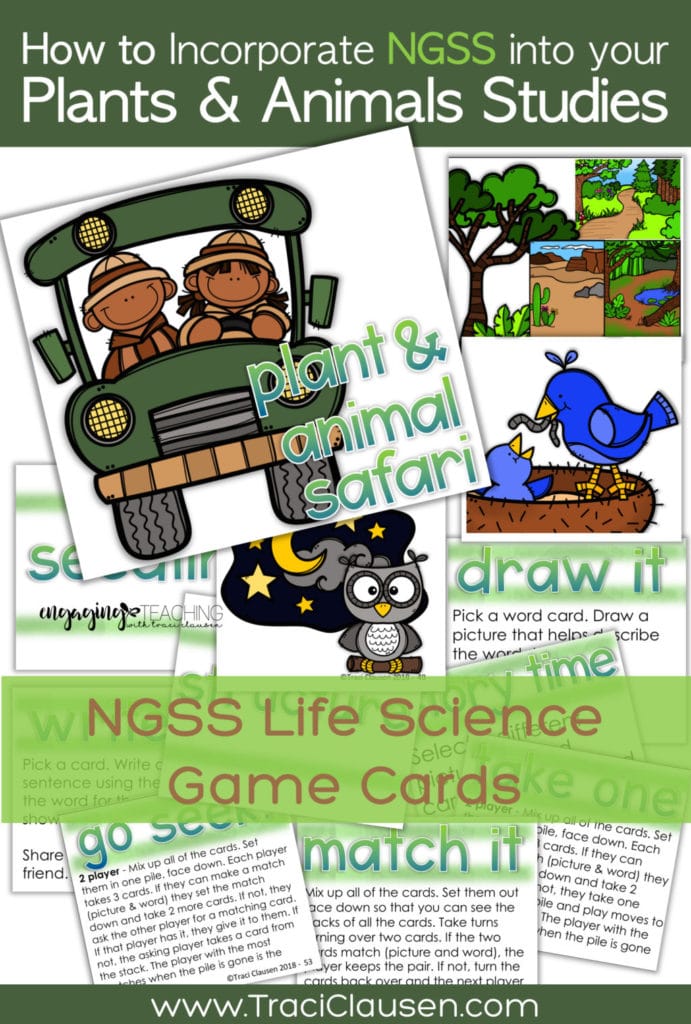
The cards are great for independent matching, writing, discussion, and collaborative activities.
Vocabulary
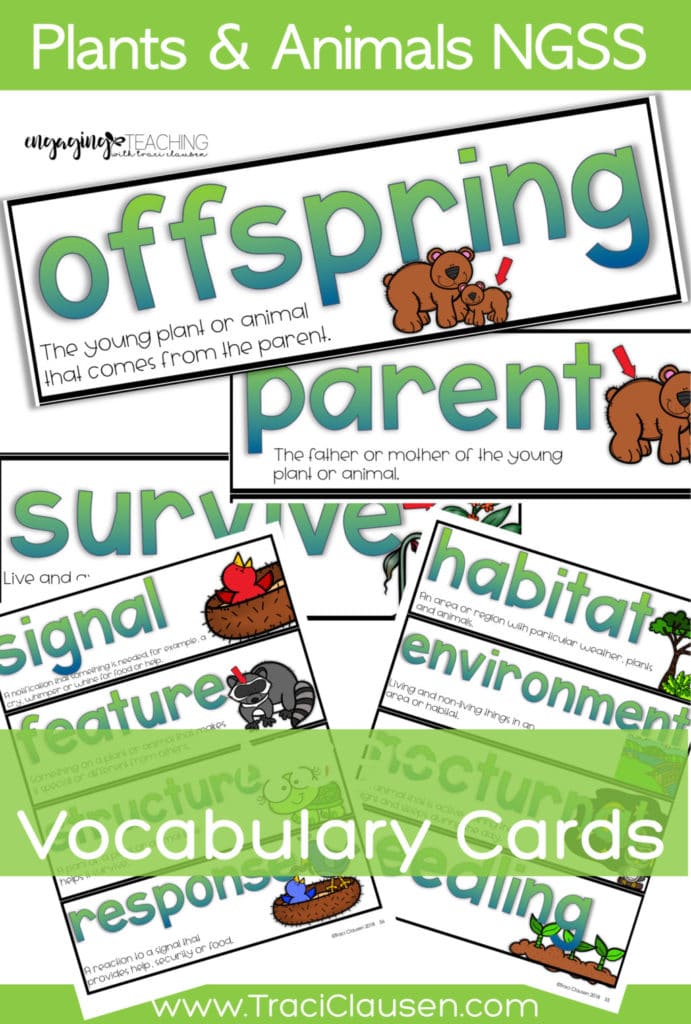
Using rich content vocabulary is essential to developing depth of knowledge. These vocabulary cards help me keep the focus on our theme throughout the day. We refer to the cards often. One of my favorite teacher moments is listening to the kiddos take turns playing teacher with the cards:
Who can tell me what the word nocturnal means?
Who can name a way that a plant is able to survive in a hot desert habit?
Beyond awesome.
Assessment
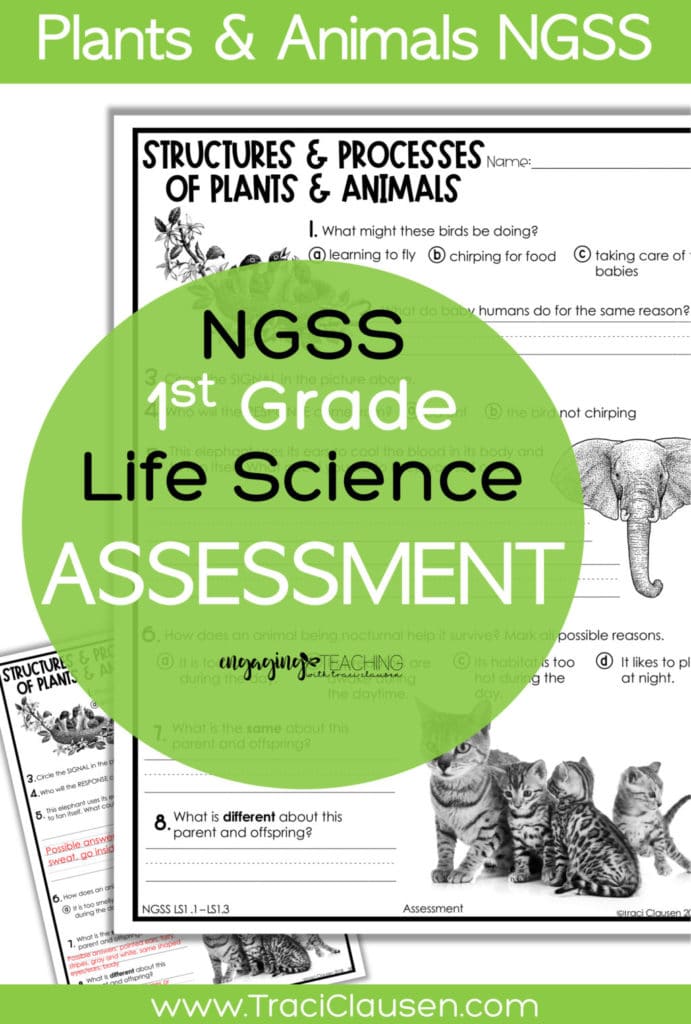
Throughout this unit, we do small formative assessments. I keep an eye on their collaboration and discussions to find areas we need to spend more time developing our knowledge. However, to wrap it all up, I give the kiddos a summative assessment. This quick test is a great way to ensure I have something in the grade book to indicate standard mastery.
Structures and Processes of Plants and Animals
This first grade NGSS life science resource joins the NGSS earth science resource: Patterns & Predictability – Space Systems in my TPT store. It includes a whole lot of lesson ideas and activities to bring rigor and depth to your study of plants and animals. Head on over and check it out.
In the beginning, I struggled a bit with the decrease in science standards as we moved to NGSS. But I am really liking their clarity now that I’ve had time to work with them more. What’s your most/least favorite part of NGSS?



